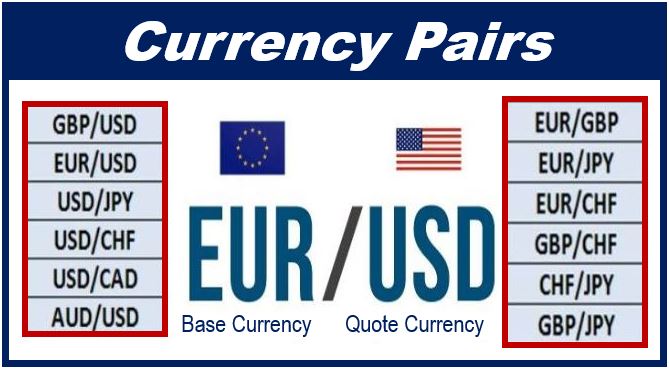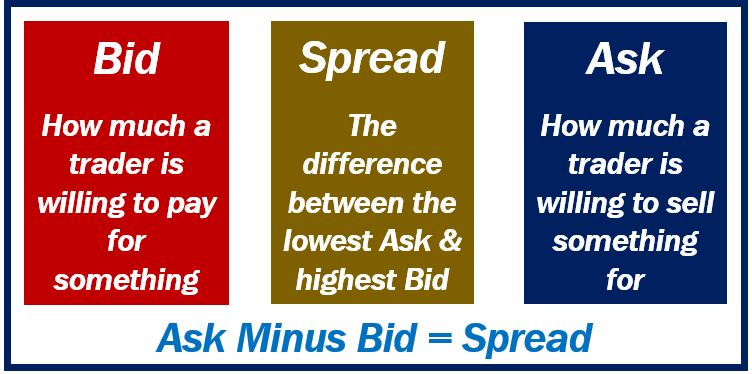More than 180 official currencies are circulating in the world. Each of these currencies has a different value against each other which keeps on changing at every moment. Due to continuous change in currency price, profits can be booked by buying a currency at a lower price and selling at higher.

Forex or foreign exchange denotes buying and selling one currency in exchange for another. The frequent buying and selling of the currency pairs hoping to book profit is called forex trading.
Forex is the largest trading market in the world with a daily trading volume of $6.6 trillion USD in 2019. The market is growing exponentially every year due to high liquidity and increased participation by individuals, financial institutions and corporations.
How Does Forex Market Work?
The working of the forex market is almost similar to any other trading market where you buy and sell a financial instrument to make profits. The major difference is that to buy any currency, you need to pay in another currency. This means if you are buying any currency, you are also selling another currency that is why forex trading occurs in currency pairs like USD/EUR, USD/JPY, etc.
The price movements of the currency pairs mainly depend on the economic condition and macroeconomic trends of the country involved. For e.g.: the price movement of USD/JPY will be greatly affected by GDP, unemployment rate, inflation, the fiscal and monetary policy of Japan & the USA. Since forex market is an international financial market, the international geopolitical situation, cross-border trade, global supply demand of currencies, financial inflows, and outflows are also responsible for the price movements of currency pairs.
The price changes of each currency pair are quoted in pips (percentage in points) out to four decimal points.
The currency pairs are traded in different lot sizes (standard, mini & micro lot) and the buyer has to buy the whole lot to speculate on the movements of a quote currency at bid/ask price. The bid/ask price of each currency pair keeps changing every second throughout the active trading hours of the week.
The forex market remains active 24 hours a day and is only closed from Friday evening to Sunday evening. The trades are executed in three sessions namely European, Asian, and United States trading sessions.
For a better understanding of forex trades, it is important to apprehend basic terminologies involved in forex trading.
Basic Forex Market Terminologies
-
Currency Pairs

Currencies are always traded in pairs. Trading on any pair means buying one currency while selling another. The currencies are designated by symbols like the US Dollar is symbolized by USD, Euro is depicted by EUR.
The currency pairs involve two currencies separated by a slash. The currency placed before the slash is the one that will be bought (called Base currency) and the one after the slash is the one that will be sold (called Quote currency) at a given price. For example, if USD/EUR is priced at 0.8468, it means that the buyer will have to pay 0.8468 EUR to buy 1 USD.
The currency pairs are divided into major, minor, and exotic pairs based on the popularity and average trading volumes of the pairs. Nearly 85% of the forex trading is done on 7 major currency pairs.
-
Pips
Pip refers to the percentage in points which is the smallest possible change in the price of currency pair.
Ideally, it denotes a single-digit move on the fourth decimal place of the currency price. Suppose the asking price of USD/EUR jumps from 0.8468 to 0.8470, it can be said that the price increased by 2 pips. Any change in pips in the price represents an increase or decrease by a fixed amount as the currency pairs are traded in predefined lot size.
-
Lot Size
The lot size denotes the quantity of the currency pairs that are to be bought or sold in a single trade.
Currency pairs can only be traded in a fixed lot. In general, a standard lot contains 100,000 units of the base currency but can vary from broker to broker. This means that a change of 1 pip in USD/EUR price will change the price of the standard lot by 10$.
Apart from the standard lot, traders can also buy and sell mini or micro lots which contain 10,000 and 1,000 units of the base currency respectively. The change in the pip value will affect a micro, mini, and standard lot differently. Apart from the predefined lot size, some brokers also offer variable lots which can be customized.
-
Dealer
Forex Dealer is a facilitator that allows you to transact in the forex market. Businesses & individuals can’t directly deal (buy or sell) in the forex market. They need a liquidity provider for this that can offer them the currency that they want. Or they need to use an intermediary that has access to the liquidity providers. These intermediaries are often called brokers or forex dealers. Example include smaller regional banks and retail brokers.
Major global banks like UBS, Citi, Barclays etc. act as a liquidity provider in the forex market as they have many major clients like corporations & intermediary clients, they have constant supply of buy/sell orders of all major currencies and they can fulfill most big orders.
It’s important to note that retail forex traders should only choose brokers that are regulated or licensed by their regional financial regulators like – NFA & CFTC licensed brokerages in the US, FCA regulated brokers in UK, ASIC in Australia (You can find a list with reputable trading brokers tha hold ASIC License and legally accept retail and professional Australian Traders), CMA in Kenya, Bappebti in Indonesia, FSCA regulated brokers in South Africa etc. Regulation is very crucial for trader security and broker’s transparency.
-
Bid/Ask Price

Understanding the bid and ask price is of utmost importance to begin forex trading as these are the price that the trader will receive/pay for a successful trade. Generally, the current price of the currency pairs is denoted by bid and ask price separated by a slash.
The bid price is the price that the dealer is willing to pay if you want to sell currency.
The ask price is the price at which the dealer is selling the currency.
Generally, the broker or a bank acts as your dealer in the forex market when you want to buy/sell currencies. They will always buy currency from you at a lower price than actual market rate and similarly sell at higher price when you buy currency from them to make profits.
Hence, for every dealer, the ask price is always higher than the bid price. This difference is their fees or commission to facilitate forex trades.
For example, if the bid/ask price of USD/EUR is 0.8470/0.8466, then 1 USD can be bought by paying 0.8470 EUR while the same can be sold in return of 0.8466 EUR.
-
Leverage and Margin
Leverage and margin allow the traders to open a larger position with a lesser deposit as money can be borrowed from the brokers for forex trading. Leverage is the ratio up to which traders can borrow from the broker for trading. Margin is the initial amount that the trader has to pay to open up a larger position in a trade.
For example, if a broker offers a leverage ratio of 1:100 then you can open a position worth 100$ by depositing the margin amount of 1$. In this case, the margin is 1%. The rest of the 99$ will be borrowed from the broker.
New traders need to understand that higher leverage and lower margin can allow them to gain high returns with a lesser initial deposit but it can also lead to significant losses. Sometimes traders end up losing much more than the invested amount.
Take Caution: Know the Risks Involved
Understanding the basics of forex trading is easy and any individual around the world can take part in the largest traded market of the world. However, it must be noted that forex trading involves an ample amount of risk and beginner traders must understand the risks involved before initiating the actual trades. You can aid yourself by making use of sites such as markets.com review to help you make educated decisions.
Nearly 70-80% of the new traders lose money in forex trading. The price fluctuation can occur at any time due to any economic or geopolitical activity in any of the countries. These activities can fluctuate the price of currency pairs at any time of the day. Hence, it becomes nearly impossible to keep a track of the price movement and predict them correctly at the right time.
However, the risks involved in forex trading can be mitigated to a lower level by keeping regular updates of the market activity, using safe leverage, stop loss, or limit order. A genuine analysis must be done before executing any trades. Traders should keep greed and emotions aside while making trades in the forex market as it can lead to a disastrous outcome.
Video – What is a Trader?
Interesting related article: “What is a Trader?“

